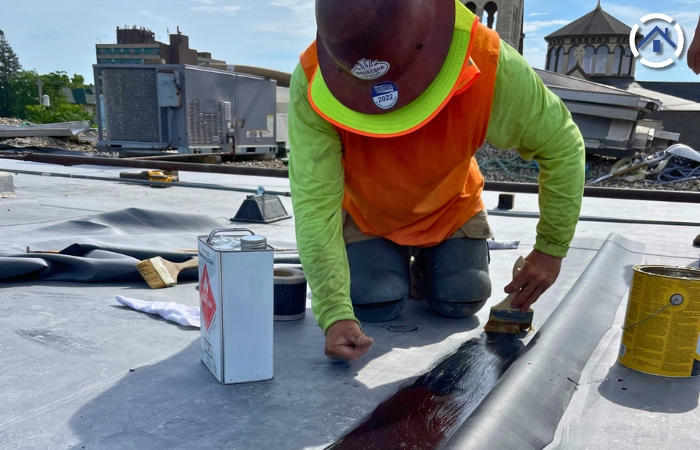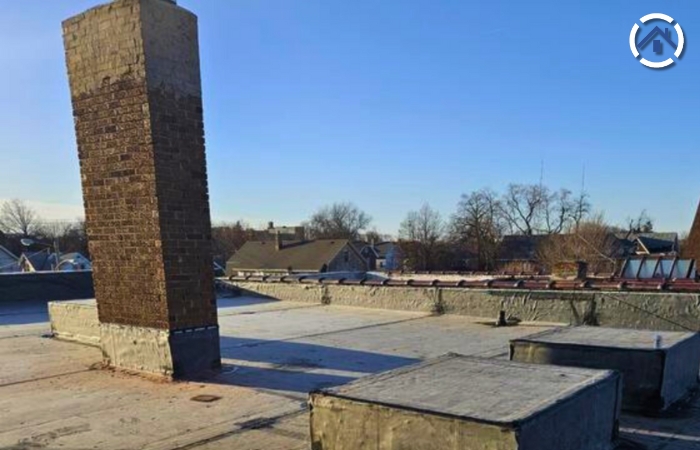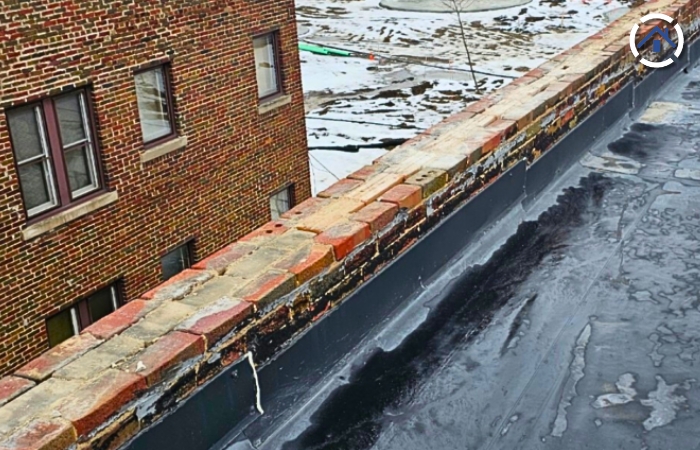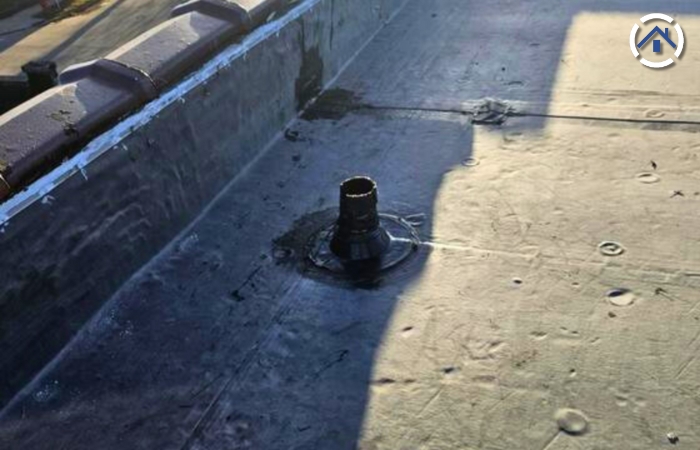
With its remarkable durability and cost-effectiveness, EPDM (ethylene propylene diene terpolymer) roofing stands as a stalwart among commercial roofing systems, gracing the skyline of countless structures in the US and worldwide. Renowned for its resistance to weathering, UV radiation, and ozone exposure, EPDM has emerged as one of the top choices for commercial property owners seeking longevity and reliability in their roofing systems.
However, like any roofing material, these roofs are not without their challenges. Despite their impressive track record, EPDM roofs are susceptible to a few recurring issues that demand attention. What are some of the biggest problems with EPDM roofs that a property owner must be aware of? Understanding these pitfalls and implementing preventive measures is paramount for maximizing the lifespan and performance of EPDM roofing systems. Here are some of the biggest problems with EPDM roofs that you might face, along with measures to mitigate them.

Cleaning, Drying, and Preparation: Before applying EPDM (ethylene propylene diene monomer) roofing material, it's essential to ensure that the surface is thoroughly cleaned, dried, and prepared. This involves removing any dirt, debris, or old roofing material, as well as ensuring that the surface is smooth and free of moisture. Failure to do so can result in poor adhesion and premature failure of the EPDM membrane.
Applying EPDM to a Wet Surface: EPDM should never be applied to a wet surface. Moisture trapped beneath the membrane can lead to blistering, bubbling, and adhesive failure. It's crucial to wait for the surface to dry completely before installing the EPDM to ensure a proper bond and long-term performance.
Using Incompatible Substrates and Lack of Proper Barrier: EPDM should be installed on compatible substrates, such as wood, concrete, or certain types of insulation. Using incompatible substrates can lead to poor adhesion and premature failure of the roofing system. Additionally, it's important to use a proper barrier, such as a primer or underlayment, to protect the substrate and enhance adhesion.
As time passes, EPDM rubber tends to shrink naturally because of environmental influences such as changes in temperature and exposure to UV radiation, making it one of the biggest issues with EPDM roofs. As the rubber contracts, it slowly moves away from nearby surfaces like walls, flashing components, and areas where penetrations are made. This shrinking action creates gaps or voids between the EPDM membrane and these structures, leaving vulnerable areas exposed.
Consequently, these openings provide pathways for water to penetrate beneath the roofing membrane, potentially reaching the underlying decking material. Failure to promptly address these issues through correct installation methods, routine inspections, and maintenance procedures heightens the likelihood of leaks and water-related harm to the interior of the building.
Seams on EPDM (ethylene propylene diene monomer) roofing refer to the areas where individual EPDM membrane sheets are joined or bonded to create a continuous waterproof barrier. These seams are typically created during the installation process and are essential for ensuring the roofing system's integrity. Properly installed seams help prevent water infiltration and maintain the roof's structural integrity. However, if seams are not properly aligned or bonded, they can become weak points in the roofing system, potentially leading to leaks and other issues, which is one of the three biggest problems with EPDM roofs.
Adjustment and Potential Pulling Apart:
EPDM roofing seams require precise installation adjustment to ensure proper alignment and bonding. If seams are not adjusted correctly, they may experience shifting or pulling apart over time. Environmental factors such as temperature changes and building movement can exacerbate this issue, leading to seam separation.
Regular Maintenance Requirement: EPDM roofing systems, including their seams, necessitate ongoing maintenance to prevent potential issues. Without regular maintenance, seams may become vulnerable to deterioration, lifting, or other forms of damage. Maintenance efforts are essential to address seam-related issues promptly and avoid water infiltration into the roofing system.
EPDM (ethylene propylene diene monomer) roofs are commonly installed using an adhesive bonding method to adhere the EPDM membrane to the substrate. This adhesive creates a strong, waterproof seal that helps prevent water infiltration and ensures the integrity of the roofing system. Properly installed seams help prevent water infiltration and maintain the structural integrity of the roof. However, if seams are not properly aligned or bonded, they can become weak points in the roofing system, potentially leading to leaks and other issues.
Here's how EPDM roofs are attached in key areas:
When installing EPDM roofing, the membrane is typically rolled out and carefully positioned over the roof surface. The adhesive is applied to both the EPDM membrane and the substrate (such as wood or insulation) along the edges where the membrane meets the walls of the building. The membrane is then pressed firmly against the wall, ensuring a tight seal and proper adhesion to prevent water from seeping into the structure.

EPDM roofing membranes often feature corners where two sections of the membrane meet or where the roof transitions from horizontal to vertical surfaces. The adhesive is applied to both the membrane and the substrate in these corner areas to create a secure bond and seal any potential gaps or joints. Careful attention is paid to ensuring the membrane is properly folded and adhered to at corners to maintain waterproofing integrity and prevent water infiltration.
EPDM roofs commonly have penetrations such as drains, pipes, or vents that protrude through the roofing membrane. The adhesive is applied around these penetrations to seal the membrane tightly against the substrate and create a watertight seal. Special attention is given to ensuring that the membrane is properly cut and sealed around the penetrations to prevent water from entering the roofing system through these vulnerable areas.

Understanding the three biggest problems with EPDM roofs - improper installation, shrinkage, and seam issues - is crucial for property owners. Failure to promptly and effectively address these challenges can result in substantial damage and expensive repairs. By being aware of these challenges, property owners can take proactive steps to ensure their EPDM roofs are installed correctly, regularly inspected, and properly maintained. This proactive approach can ultimately help avoid water infiltration, leaks, and structural damage to the property.
Furthermore, seeking guidance and assistance from experts and professionals in the roofing industry can be invaluable in identifying and resolving these issues efficiently. Their expertise can provide property owners with tailored solutions and preventative measures to mitigate potential risks and ensure the long-term integrity of their EPDM roofing systems.